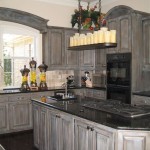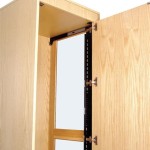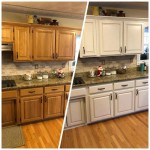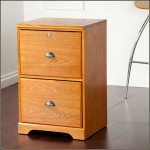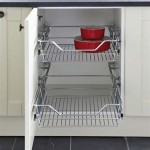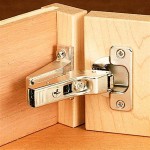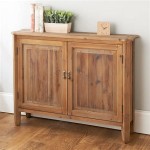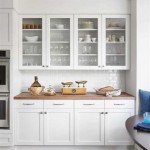Replacing Your Medicine Cabinet Mirror Door: A Comprehensive Guide
A medicine cabinet mirror door serves two primary functions: providing a reflective surface for personal grooming and concealing the toiletries and medications within the cabinet. Over time, these doors can deteriorate due to moisture, physical damage, or simply aging. Cracks, chips, discoloration, and loose hinges are common problems that necessitate replacement. Replacing a medicine cabinet mirror door can significantly improve the aesthetic appeal and functionality of a bathroom, and is often a more economical solution than replacing the entire cabinet.
Before embarking on a replacement project, it is crucial to assess the existing door and cabinet. Consider the type of damage, the size and style of the door, and the cabinet's overall condition. This assessment will inform the selection of a suitable replacement and the tools and materials required for installation.
Determining the Need for Replacement
Several factors can indicate the need for a medicine cabinet mirror door replacement. Obvious physical damage, such as cracks or chips in the mirror, poses a safety hazard and detracts from the bathroom's appearance. Discoloration, often caused by moisture seeping behind the reflective surface, can also make the mirror unusable. Loose or broken hinges can cause the door to sag or detach completely, rendering the cabinet inaccessible.
Beyond purely functional issues, aesthetic considerations may also drive the decision to replace the door. An outdated style or a door that no longer complements the bathroom's décor can be a reason for replacement. Replacing the door offers an opportunity to update the look of the bathroom without undertaking a full renovation.
Furthermore, if the existing mirror door has become difficult to clean or maintain, replacement may be a practical solution. Some older mirror surfaces are prone to streaking or clouding, making it challenging to achieve a clear reflection. A new mirror door with a modern coating can offer improved clarity and ease of cleaning.
Measuring and Selecting a Replacement Door
Accurate measurements are essential for ensuring a proper fit. Measure the height and width of the existing door, taking measurements from the outside edges. It is also important to note the type and location of the hinges. Some medicine cabinets use surface-mounted hinges, while others use concealed hinges. The hinge type will determine the type of replacement door that can be used.
When selecting a replacement door, several options are available. Generic replacement doors are available at most home improvement stores in standard sizes. These doors are often the most affordable option, but may not perfectly match the existing cabinet in terms of style or finish. Custom-made doors offer a wider range of design options and can be tailored to fit specific cabinet dimensions. Glass shops and online retailers often provide custom mirror door services.
In addition to the size and style, consider the type of mirror glass used in the replacement door. Standard mirror glass is suitable for most applications, but thicker glass may be more durable and resistant to breakage. Tempered glass is a safer option, as it shatters into small, blunt pieces if broken. Beveled edges can add a touch of elegance to the door, while frameless designs offer a clean, modern look.
Material selection extends to the frame itself, if the chosen door has one. Common materials include wood, metal (often aluminum or stainless steel), and plastic. Wood frames can be painted or stained to match the bathroom's décor, while metal frames offer durability and a contemporary aesthetic. Plastic frames are typically the most affordable option, but may not be as durable as wood or metal.
Step-by-Step Guide to Replacing the Mirror Door
Replacing a medicine cabinet mirror door is a relatively straightforward project that can be completed with basic tools and some DIY skills. The following steps provide a general guide to the process:
1. Gather the Necessary Tools and Materials: This includes the replacement mirror door, a screwdriver (matching the screw type used on the hinges), a measuring tape, a level, a drill (if necessary for installing new hinges), safety glasses, and gloves.
2. Remove the Existing Door: Carefully remove the existing door by unscrewing the hinges from the cabinet. If the hinges are damaged or rusted, use penetrating oil to loosen them before attempting removal. Support the door while unscrewing the hinges to prevent it from falling and breaking.
3. Prepare the Cabinet Frame: Clean the cabinet frame where the hinges will be attached. Remove any old adhesive or debris. If the hinge screw holes are stripped, use wood filler to repair them before re-drilling pilot holes.
4. Install the New Hinges (If Necessary): If the replacement door uses different hinges than the original door, you may need to install new hinges on the cabinet frame. Use a level to ensure that the hinges are aligned properly. Drill pilot holes before screwing in the hinges to prevent the wood from splitting. For concealed hinges, refer to the manufacturer's instructions for installation.
5. Attach the Replacement Door: Align the replacement door with the cabinet frame and attach it to the hinges using the screws provided. Ensure that the door hangs straight and closes properly. Adjust the hinges as needed to achieve a smooth and even swing.
6. Test the Door: Open and close the door several times to ensure that it operates smoothly and securely. Check for any gaps or misalignment. Tighten the screws on the hinges if necessary.
7. Clean the Mirror: Clean the mirror surface with a glass cleaner to remove any fingerprints or smudges. Inspect the door for any imperfections.
Addressing Common Challenges
Several challenges can arise during a medicine cabinet mirror door replacement. Finding a replacement door that matches the exact size and style of the existing door can be difficult, especially for older or custom-built cabinets. In such cases, consider having a custom door made or exploring alternative door styles that complement the bathroom's décor.
Stripped screw holes are a common problem that can prevent the hinges from being securely attached to the cabinet frame. Wood filler can be used to repair stripped screw holes. Apply the wood filler to the holes, allow it to dry completely, and then drill new pilot holes before screwing the hinges in place. Toothpicks or matchsticks can also be used as a temporary fix by inserting them into the stripped hole before screwing in the screw.
Misaligned hinges can cause the door to sag or bind. Loosen the screws on the hinges and adjust their position until the door hangs straight and closes smoothly. Use a level to ensure that the hinges are properly aligned. Shims can be used to correct minor misalignments.
Sometimes, the replacement door may not sit flush with the cabinet frame. This can be caused by an uneven cabinet frame or incorrect hinge placement. Check the cabinet frame for any warping or damage. If the frame is uneven, use shims to level it out. Adjust the hinge placement to ensure that the door sits flush with the frame.
Dealing with rusted or corroded hinges can also be challenging. Apply penetrating oil to the hinges and allow it to soak for several hours before attempting to remove them. Use a screwdriver with a good grip to prevent stripping the screw heads. If the screws are severely rusted, use a screw extractor tool to remove them.
Alternative Approaches and Considerations
If a direct replacement door is unavailable or too costly, alternative approaches can be considered. One option is to replace the entire medicine cabinet. This may be necessary if the cabinet itself is damaged or outdated. When selecting a new medicine cabinet, be sure to choose one that fits the existing space and complements the bathroom's décor.
Another alternative is to reface the existing cabinet. This involves replacing the door and drawer fronts, as well as applying a new finish to the cabinet frame. Refacing can be a more affordable option than replacing the entire cabinet, and it allows you to update the look of the bathroom without undertaking a major renovation.
Before making any decisions, consider the overall budget for the project. Replacement doors range in price from inexpensive generic models to more expensive custom-made options. Refacing and replacing the entire cabinet are typically more costly alternatives.
The level of DIY skill required for each option should also be taken into account. Replacing a mirror door is a relatively simple project that can be completed by most homeowners. Refacing and replacing the entire cabinet may require more advanced carpentry skills.
Finally, consider the long-term value of each option. A high-quality replacement door or a new medicine cabinet can add value to the home, while a poorly executed repair may detract from its value.

Bathroom Medicine Cabinet Mirror Replacement Doityourself Com Community Forums

How To Install A Mirrored Medicine Cabinet Vanity Light

How To Turn A Mirror Into Medicine Cabinet Diy Bathroom

How To Replace A Medicine Cabinet Diy

How To Update A Medicine Cabinet Without Replacing It Wg Wood S

How To Install A Medicine Cabinet The Home Depot

How To Install A Medicine Cabinet The Home Depot

How To Replace A Medicine Cabinet Mirror Doityourself Com

Why Designers Most Medicine Cabinets Some Genius Alternative Bathroom Storage Solutions Emily Henderson

How To Replace Medicine Cabinet Easy
Related Posts

